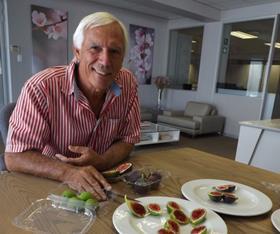
Increased migration from southern European countries to nations in the north of Europe such as the UK and Germany is bringing with it a new demand for exotic fruits that, until fairly recently, have not featured strongly on retail shelves.
One example is the increasing demand for figs, and this potentially creates new opportunities for South African fruit growers.
A comprehensive fig breeding programme, one of only a few in the world, is set to offer South African and international growers a whole range of new varieties which could revolutionise fig production around the world.
South African breeders, re:inc innovation, says putting figs on the map in a South African context is a major challenge, but one that excites the breeders involved.
“There was a time when there were more than 400,000 fig trees in South Africa, mostly planted along canals in various parts of the country,” says Keith Wilson, exotic products breeder at re:inc.
These fruits were mainly aimed at the canning and drying business, although production eventually dropped to just 30 hectares, and even a programme by the Agricultural Research Council focused on importing new varieties for evaluation under South African conditions was abandoned in the mid 1990s.
Now re:inc says it has in its breeding programme some exciting new varieties which could change all this.
“We are looking at fig varieties that have all the necessary eating and keeping qualities but that are earlier and later than that of the bulk produced now between February to the end of March,' explains Riaan van Wyk, CEO of re:inc innovation. 'There are a few varieties that fit into this category, namely BRE, which ripens in November and December, as well as KUD, which is ready to pack from March 'till May.
“The inclusion of these new varieties in future may well mean that South Africa could supply leading customers for a period of six months of the year,” he continues.
The re:inc innovation programme to collect fig varieties for evaluation was initiated by Keith Wilson in 1998 with the specific aim of utilising existing varieties to expand the season as well as increasing consumer choice.
“Fresh fig consumption, along with prices, has been on the increase over the past 20 years,” says Van Wyk. “Major varieties like Bursa, Brown Turkey and Collar that are marketed in western markets originate from Turkey, Brazil and Spain. This creates opportunities for niche markets and improved varieties. Market supply is currently still erratic due to the short season availability from countries of major production. Market research has indicated that major supermarket groups are seeking longer supply windows.'
He says several commercial varieties have been sourced by re:inc and planted since 1998 to evaluate under South African conditions. These varieties originated from almost every country bordering the Mediterranean Sea as well as Transcaucasian countries.
“Six varieties are now ready for commercialisation, with leading supermarkets in the UK having already sampled fruit and approved them for their commercial and consumer suitability. Another 12 varieties are currently under evaluation,' notes Van Wyk.
Keith Wilson says the re:inc innovation breeding programme started in 2010, with first selections evaluated during 2014.
“Amongst the most important criteria for breeding are to increase the average weight of marketable fruit to 75 grams, more early Breba and late season varieties, retaining the best taste and eating characteristics, as well as increasing the fruit's resistance to handling, heat stress and wind damage and better transportability.”
The programme is also looking for new varieties with deep red pulp colour.
Apart from breeding varieties that could develop into commercial volumes, it also endeavours to develop niche market varieties. These are mainly varieties with red peel colour, Chimera types with attractive colour markings and those with more pronounced attractive shape attributes, namely round and pear shape.
According to Van Wyk there are presently a number of seedlings in different phases of development. In phase one, 500 new trees have been planted and they are already bearing fruit. There are a further 850 seedlings in phase one that are not yet bearing, with another 1,200 trees from new crosses to be planted this year.



